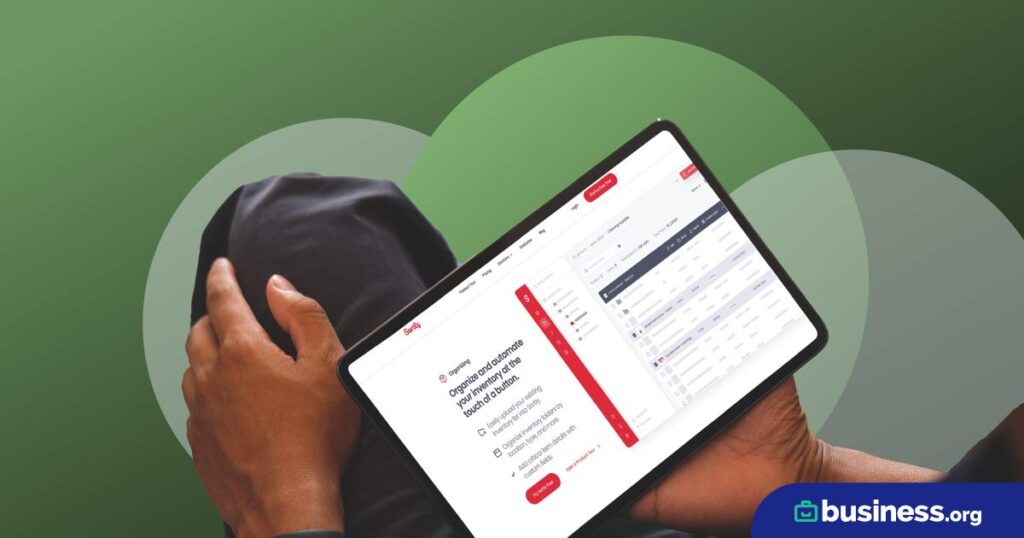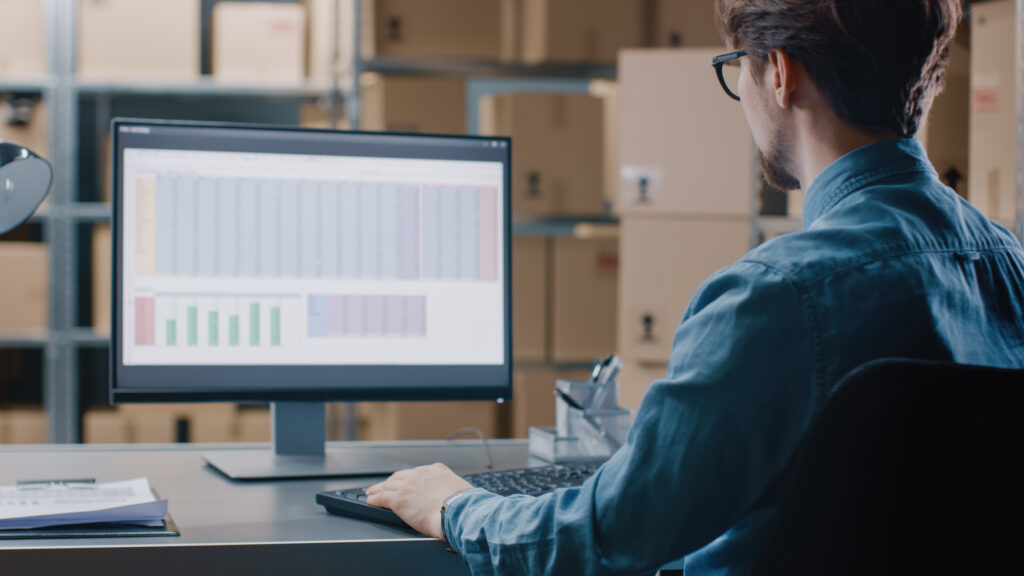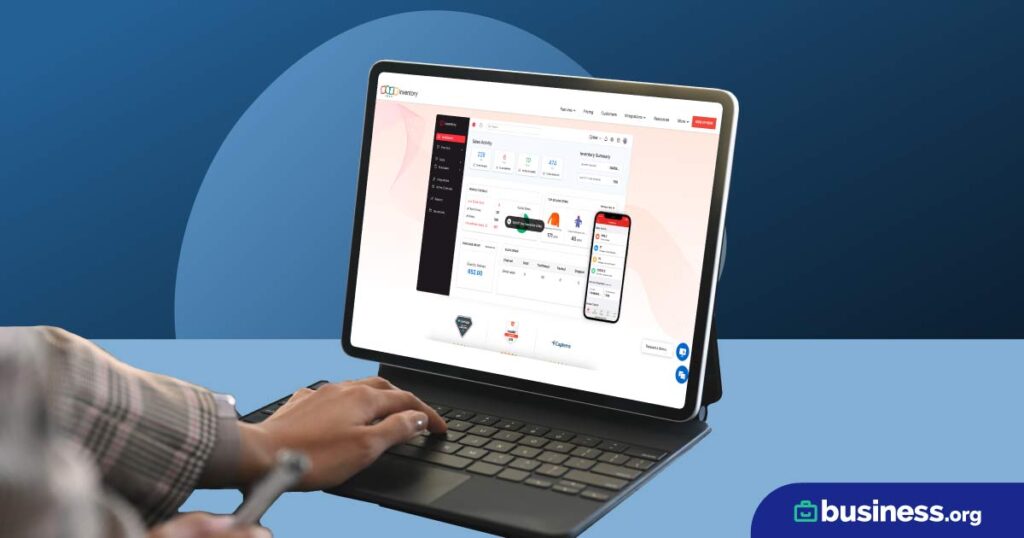We are committed to sharing unbiased reviews. Some of the links on our site are from our partners who compensate us. Read our editorial guidelines and advertising disclosure.
What Is Inventory Management?
Inventory management refers to the series of processes your business uses to obtain, store, and use sellable goods. The goal of an inventory management system is to help you make smarter, more cost-efficient decisions when it comes to buying products from your manufacturer, transporting those products to your business or warehouse, storing your unsold products, and fulfilling customer orders.
Why is inventory management important?
Inventory—while an important asset for your business—can be a huge risk. Inventory management systems (especially automated software solutions) are vital cost-saving measures that can help you minimize loss, lower your storage costs, and sell more items.
Once you order and pay for your products, the capital you spent to acquire those products is essentially tied up in your inventory. If you can’t sell your products, those items become a loss for your business.
Inventory management systems help you avoid overbuying products that don’t sell. Inventory management can also help you keep inventory costs low—which is important since high storage fees, shipping fees, and manufacturing fees can all eat into your profit margins.
Believe it or not, good management solutions can also enhance your customer service, since they help you keep product in stock, improve your customer order fulfillment, and track sales across multiple channels.
Most importantly, though, inventory management makes your life easier in general. It can help you organize your warehouse, track inventory movement across multiple locations, and even integrate with your other business solutions (like your point-of-sale or accounting software).
Overall, inventory management is an excellent strategy for any business that sells physical goods.
By signing up I agree to the Terms of Use and Privacy Policy.
1. Decide if periodic or perpetual inventory management is right for you
Before you can get your inventory management system off the ground, you need to determine whether a periodic or perpetual inventory solution is right for you. Periodic and perpetual inventory management are two different ways to approach your inventory tracking. This choice will affect your software purchasing decisions, the tracking programs you implement, and more.
With a periodic system, you do a physical count of your inventory at the beginning and end of your set time period (which could be a month, a quarter, a year—whatever works for you). Then you use your counts to determine the number of products you’ve sold, and you calculate the cost of goods sold (COGS) based on either a first in, first out (FIFO) or a last in, first out (LIFO) approach.
Perpetual inventory systems, on the other hand, track each individual item in your inventory through every phase of the selling process. This helps you calculate the exact costs associated with each item sold, and it gives you lots of insight into the sticking points in your inventory management system. The catch? It basically requires the use of inventory management software and tracking devices (like barcode scanners)—all of which can be expensive.
2. Choose your inventory management software
Next, you’ll want to choose an inventory management software. There are tons (and we mean tons) of inventory management solutions out there, and each offers different pros and cons. So do your research to see which options suit the unique needs of your business—and maybe check out our top picks for inventory management software to make sure you’re getting the best deal.
3. Implement an inventory tracking program
Once you know the type of system you want to run and you have the software you need (if any), it’s time to start actually tracking your products. So you’ll need to consider which inventory tracking system works best for you: a periodic inventory system or a perpetual inventory system.
Once you’ve chosen an inventory tracking method, you’ll need to train your employees to use that system. If your employees don’t know they’re supposed to scan each individual item upon arrival at your warehouse, it could cause huge snags in your inventory management system. A bit of training up front can go a long way toward helping your system run smoothly.
If you’re running a periodic system, this means you’ll need to establish how often you’ll conduct physical inventory counts. You may also need to establish best practices for how those counts will be done and by whom.
If you’re running a perpetual inventory system, most of your product tracking will be done digitally, but you’ll still need to establish a time frame for when you’ll conduct physical inventory counts as well—that way, you can confirm the count recorded by your digital system. From there, you’ll also need to decide how you’ll track individual items in your system.
FYI: Many businesses prefer to use barcodes and scanners. They’re a relatively cheap solution compared to other options, but your business will have to invest in a barcode generator and scanners. Alternatively, you could use radio frequency identification (RFID) tags or QR codes. Any of these methods will help you track the costs and movement of each individual item in your inventory in real time—giving you greater insight into how your system works and where it can be improved.
4. Establish an order fulfillment method
Next you’ll want to figure out how you’re going to fulfill your customer orders. Here, you have a few options:
- First in, first out. With a first in, first out method, you’d pull the oldest items in your inventory first—thereby minimizing the number of items that become obsolete or damaged while sitting on your shelf.
- Last in, first out. You could use the last in, first out method and fulfill customer orders using the most recently added products in your inventory. This ensures your customers get the freshest, newest versions of your product and consolidates your potential losses to your oldest items.
- First expired, first out. Another option is the first expired, first out method. This system works best for restaurants and other businesses that sell perishable goods, as it minimizes the number of items that spoil before you can sell them.
Figuring out the best fulfillment method can help when you’re calculating your cost of goods sold, and it can affect your customer experience—so decide what you’ll do now and train your employees to follow your chosen method.
5. Choose your reorder method
At some point, your stock will get low and you’ll have to reorder your product. But at what point should you reorder? How many items? The answers to these questions will depend on the reorder point method you use, such as the reorder point formula and the economic order quantity formula.
Many businesses use the reorder point formula to determine when to reorder product. Basically, this method aims to help you reorder your product with enough still in stock to meet customer demand while you wait for your order to arrive. Unfortunately, this method doesn’t help you determine how much product to order, so you’ll have to use a gut check there.
For some businesses, though, the economic order quantity (EOQ) formula is a better fit. The EOQ formula helps you determine the best times to reorder your product to balance manufacturing and order costs with the cost of storage for those items. It involves a bit more math, and you’ll have to adjust your calculations if your estimated customer demand is off—but it’s nothing your inventory management software can’t handle automatically.
6. Integrate with your point-of-sale and accounting systems
If you’re using inventory management software, we highly recommend integrating your system with your other business solutions—especially your point-of-sale (POS) and accounting systems.
Integrating with your POS software allows you to track your cost of goods sold down to the item. It also gives you total transparency into your inventory management system—all the way from manufacturing to sale. That way, you can see exactly how products move through your system (and where you can improve).
Because your products represent assets for your business, you’ll have to factor them into your accounting too. Now, you can do this by simply estimating the value and cost of your inventory and inputting that estimate into your accounting software. But integrating your accounting and inventory management software simplifies things because it allows you to track exact costs and value of your inventory—and every change in your product’s status is reflected in your accounting automatically.
7. Optimize your system
You’ve got your system up and running, but the process of inventory management is never done. Once your system takes effect, it’s important to analyze it and identify weaknesses. Ask yourself pointed questions, like these:
- Is it taking too long to restock your inventory after you order? You may want to optimize your supply chain for better results.
- Are you have a hard time keeping product in stock at all your brick-and-mortar locations? You may need to adjust your reorder point or figure out a better solution for replenishing retail stock.
Remember those benefits of inventory management we mentioned? Realistically, those benefits can only be achieved with continuous analysis and optimization of your system. Inventory management is an ongoing endeavor—not a one-time setup. So be sure to look at your inventory system often and strategically to make sure you’re making the best possible inventory decisions for your business.
The takeaway
Inventory management encompasses every stage of your products—from manufacturing and shipping to storage and sale. Effective inventory management is a cost-saver, plus it helps you improve customer satisfaction and simplify your business processes.
To get started, you’ll have to make some strategic decisions about the type of system that will work best for your business, then buy the necessary software and equipment to implement that system. But most importantly, you’ll need to continuously monitor and update your system whenever you find inefficiencies.
Using an inventory management system can have serious long-term benefits. Check out our article on the importance of inventory management for more information.
Disclaimer
At Business.org, our research is meant to offer general product and service recommendations. We don't guarantee that our suggestions will work best for each individual or business, so consider your unique needs when choosing products and services.








